Sina Rezaei Aghdam
Modeling and Analysis of 6G Joint Localization and Communication under Hardware Impairments
Jan 03, 2023



Abstract:Localization (position and orientation estimation) is envisioned as a key enabler to satisfy the requirements of communication and context-aware services in the sixth generation (6G) communication systems. User localization can be achieved based on delay and angle estimation using uplink or downlink pilot signals. However, hardware impairments (HWIs) distort the signals at both the transmitter and receiver sides and thus affect the localization performance. While this impact can be ignored at lower frequencies where HWIs are less severe, and the localization requirements are not stringent, modeling and analysis efforts are needed for high-frequency 6G bands (e.g., sub-THz) to assess degradation in localization accuracy due to HWIs. In this work, we model various types of impairments for a sub-THz multiple-input-multiple-output communication system and conduct a misspecified Cram\'er-Rao bound analysis to evaluate HWI-induced performance losses in terms of angle/delay estimation and the resulting 3D position/orientation estimation error. Complementary to the localization analysis, we also investigate the effect of individual and overall HWIs on communication in terms of symbol error rate (SER). Our extensive simulation results demonstrate that each type of HWI leads to a different level of degradation in angle and delay estimation performance. The prominent factors on delay estimation (e.g., phase noise and carrier frequency offset) will have a dominant negative effect on SER, while the impairments affecting only the angle estimation (e.g., mutual coupling and antenna displacement) induce slight degradation in SER performance.
MCRB-based Performance Analysis of 6G Localization under Hardware Impairments
Apr 27, 2022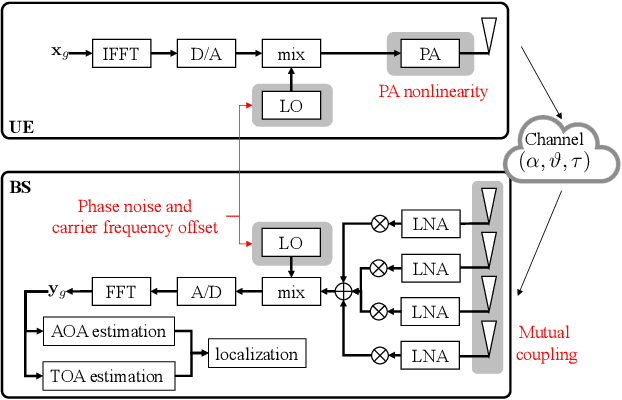
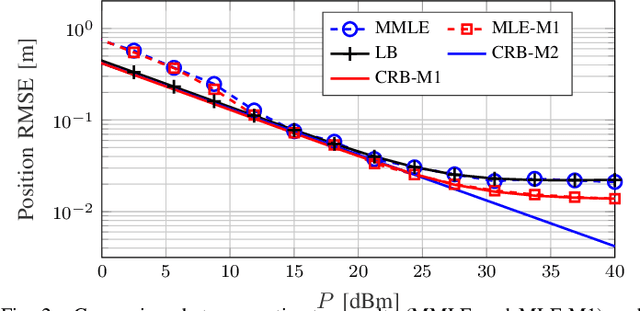
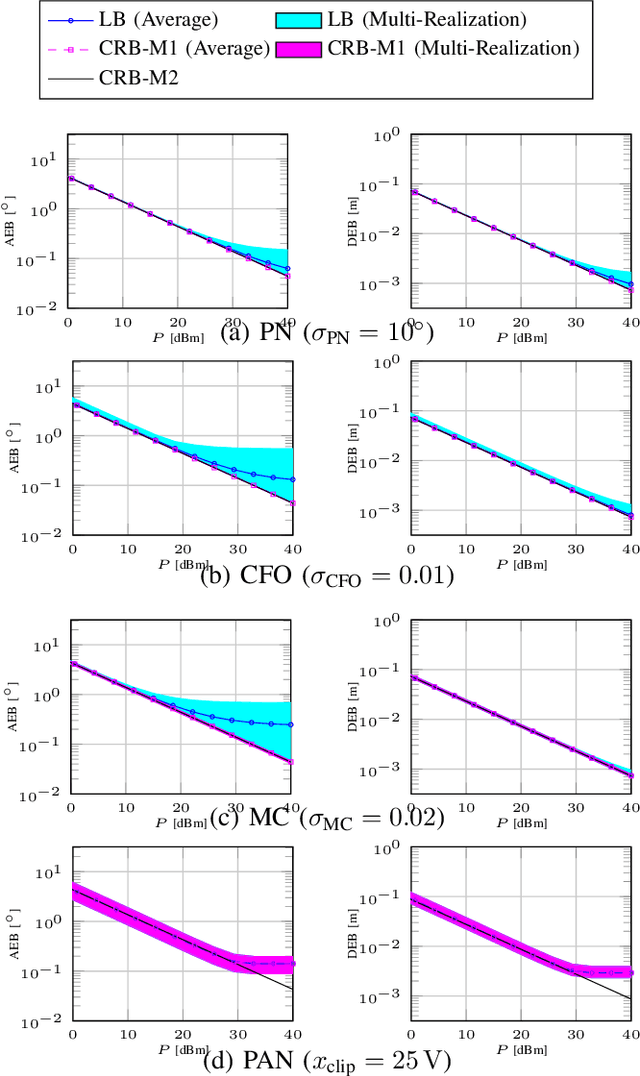
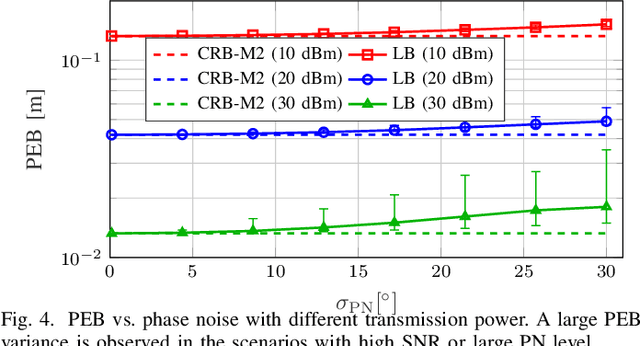
Abstract:Location information is expected to be the key to meeting the needs of communication and context-aware services in 6G systems. User localization is achieved based on delay and/or angle estimation using uplink or downlink pilot signals. However, hardware impairments (HWIs) distort the signals at both the transmitter and receiver sides and thus affect the localization performance. While this impact can be ignored at lower frequencies where HWIs are less severe, modeling and analysis efforts are needed for 6G to evaluate the localization degradation due to HWIs. In this work, we model various types of impairments and conduct a misspecified Cram\'er-Rao bound analysis to evaluate the HWI-induced performance loss. Simulation results with different types of HWIs show that each HWI leads to a different level of degradation in angle and delay estimation performance.
Privacy-Preserving Wireless Federated Learning Exploiting Inherent Hardware Impairments
Feb 21, 2021

Abstract:We consider a wireless federated learning system where multiple data holder edge devices collaborate to train a global model via sharing their parameter updates with an honest-but-curious parameter server. We demonstrate that the inherent hardware-induced distortion perturbing the model updates of the edge devices can be exploited as a privacy-preserving mechanism. In particular, we model the distortion as power-dependent additive Gaussian noise and present a power allocation strategy that provides privacy guarantees within the framework of differential privacy. We conduct numerical experiments to evaluate the performance of the proposed power allocation scheme under different levels of hardware impairments.
Distortion-Aware Linear Precoding for Massive MIMO Downlink Systems with Nonlinear Power Amplifiers
Dec 24, 2020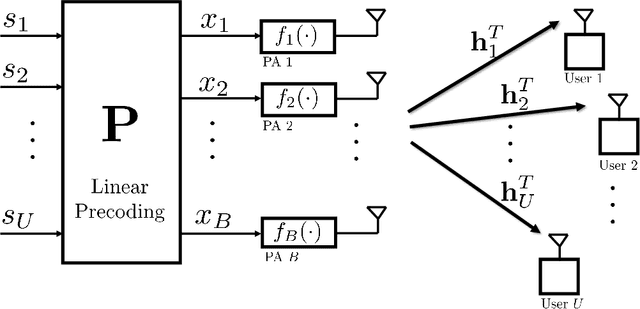


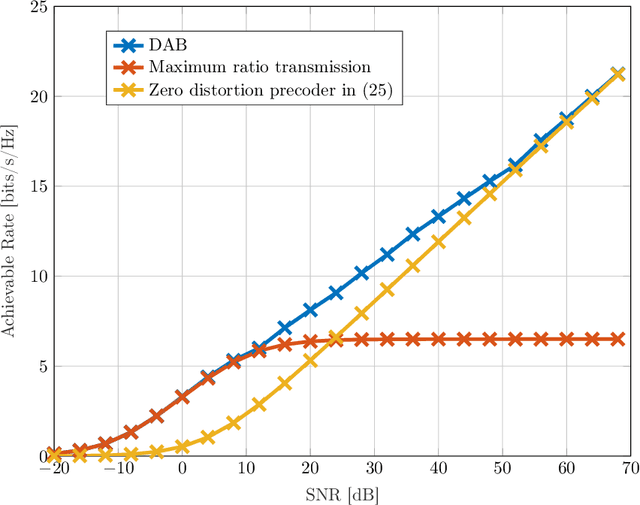
Abstract:We introduce a framework for linear precoder design over a massive multiple-input multiple-output downlink system and in presence of nonlinear power amplifiers (PAs). By studying the spatial characteristics of the distortion, we demonstrate that conventional linear precoding techniques steer nonlinear distortions in the direction of the users. We show that, by taking into account PA nonlinearity characteristics, one can design linear precoders that reduce, and in single-user scenarios, even remove completely the distortion transmitted in the direction of the users. This, however, is achieved at the price of a considerably reduced array gain. To address this issue, we present precoder optimization algorithms which simultaneously take into account the effects of array gain, distortion, multiuser interference, and receiver noise. Specifically, we derive an expression for the achievable sum rate and propose an iterative algorithm that attempts to find the precoding matrix maximizing this expression. Moreover, using a model for PA power consumption, we propose an algorithm that attempts to find the precoding matrix minimizing the consumed power for a given minimum achievable sum rate. Our numerical results demonstrate that the proposed distortion-aware precoding techniques yield considerable improvements in terms of spectral and energy efficiency compared to conventional linear precoding techniques.
Learning End-to-End Codes for the BPSK-constrained Gaussian Wiretap Channel
Mar 23, 2020



Abstract:Finite-length codes are learned for the Gaussian wiretap channel in an end-to-end manner assuming that the communication parties are equipped with deep neural networks (DNNs), and communicate through binary phase-shift keying (BPSK) modulation scheme. The goal is to find codes via DNNs which allow a pair of transmitter and receiver to communicate reliably and securely in the presence of an adversary aiming at decoding the secret messages. Following the information-theoretic secrecy principles, the security is evaluated in terms of mutual information utilizing a deep learning tool called MINE (mutual information neural estimation). System performance is evaluated for different DNN architectures, designed based on the existing secure coding schemes, at the transmitter. Numerical results demonstrate that the legitimate parties can indeed establish a secure transmission in this setting as the learned codes achieve points on almost the boundary of the equivocation region.
 Add to Chrome
Add to Chrome Add to Firefox
Add to Firefox Add to Edge
Add to Edge